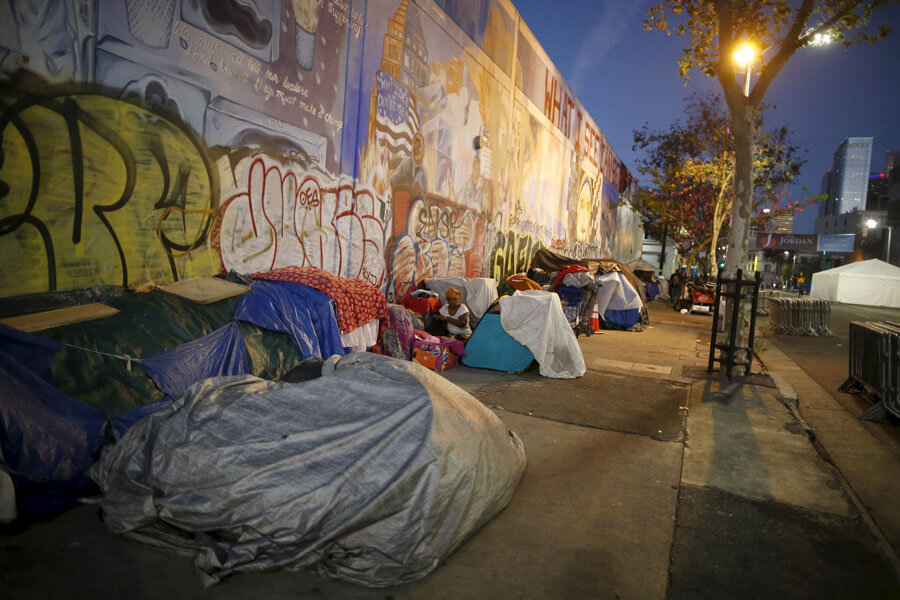Los Angeles' homeless can now sleep in cars, but will that help?
Loading...
Los Angeles leaders proposed a “state of emergency” and set aside $100 million in September for the city’s homelessness problem. And while city officials fell short of an official emergency declaration Tuesday, they enacted a “shelter crisis,” which includes initiatives that may help the city’s rampant homelessness problem.
Officials approved a program that would open up public buildings to the city’s homeless during upcoming winter nights, and allow the homeless to sleep in cars in certain parking lots. The City Council also softened a controversial law that allows authorities to seize the property of homeless people if it is stored on public sidewalks or in public alleys. Because of potential flooding caused by this winter's El Niño warming pattern in the Pacific and a growing homeless population within the last year, officials have felt pressure to address the issue at the state and city level.
But some say these measures are not enough.
“There is no state of emergency, and there is no $100 million,” Gary Blasi, a lawyer with the group Public Council told the Wall Street Journal. Mr. Blasi, along with other critics, see the September state of emergency declaration as simply a “public relations” move.
“I think the first announcement, or first declaration, was simply political rhetoric,” Mark Ryavec, president of Venice Stakeholders Association, told The Wall Street Journal.
The recent vote is “a Band-Aid solution to a major problem where every organ in the body is failing,” City Councilman Mitch Englander, who represents the West Valley, told the Los Angeles Times. “They will say that, and they’re right. We have to take measures to move forward, and these aren’t huge measures.”
During the City Council hearing Tuesday, L.A. citizens lined up behind podiums to share their grievances, with many saying they are tired of living near “the overpowering smell of human feces and urine,” as homeless encampments are built through suburban neighborhoods.
“Some of these homeless individuals commit crimes in broad daylight, and nothing is being done about it,” said one concerned citizen. “The citizens are tired of waiting for L.A. to help us …”
According to the 2014 Annual Homeless Assessment Report by the US Department of Housing and Urban Development, the state of California had the largest homeless population of 113,952 individuals. California accounted for 20 percent of the nation’s homeless population in 2014, and the Golden State also reported 62.7 percent of the homeless population living in unsheltered locations, more than any other state.
The report said 34,393 homeless lived in Los Angeles city and county in 2014, second only to New York City.
While Los Angeles County witnessed a homelessness increase of more than 5,000 people between 2013 and 2015, there has been a significant decrease over the long run. Homelessness peaked in 2005, when there were 65,287 homeless in L.A. County.
California has seen progress by other measures as well.
Between 2007 and 2014, California witnessed an 18 percent decrease in homelessness, with 25,034 individuals no longer living on the streets. This homelessness decrease was more than double that of any other state.
“We may not have moved as quickly as some people would have liked, but this committee was only established in July, so I would say we have come a long way,” Los Angeles City Council President Herb Wesson told The Wall Street Journal. “We have an opportunity here to come together, and really get some things done.”
Supporters of the "shelter crisis" decision say it is not an easy problem to fix.
“Our objective is to achieve a balance between the health and safety of our community and the rights and needs of the homeless,” said Councilman Joe Buscaino during the hearing. “We can all agree that no one should have to live next to a homeless encampment or in a homeless encampment.”








